Novel 'Heritage Walk': Destination Serampore Henry Martin Pagoda
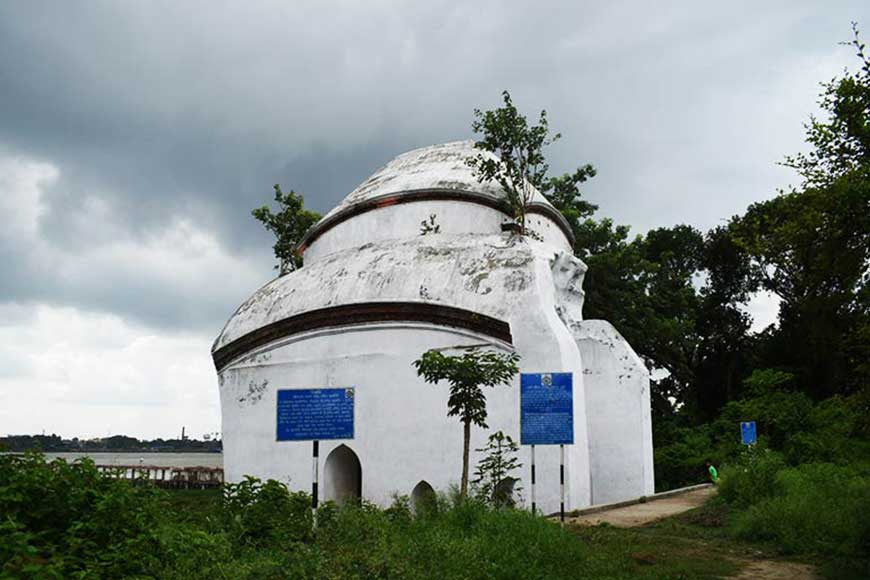
Almost like a colonial matriarch nurturing her heritage roots, the city of Kolkata holds culture and tradition close to its heart. Once the capital of British-India, Kolkata's historical legacy is intrinsically linked to its colonial past. The colonial city was developed by the East India Company and then by the British Empire. Kolkata grew rapidly in the 19th century to become the second most important city of the British Indian Empire. This was accompanied by the development of a culture that fused Indian philosophies with Victorian tradition. But throughout the developmental phase of Kolkata, the ancient towns and villages located on the western bank of the Hooghly (Ganga) River remained under the shadows of the burgeoning capital and the most hip and happening city of colonial India. In fact, there are a large number of settlements scattered along the western bank of the Hooghly River which have a rich and variegated history that go way beyond Kolkata’s past. Serampore, for instance, the pre-colonial city on the west bank of the Hooghly River was part of Danish India under the name of Frederiknagore from 1755 to 1845. Serampore ushered in a glorious era for the printing industry in the Orient with the arrival of Bishop William Carey as a representative of the Baptist Missionary Society of England. He along with William Ward set up the Serampore Mission Press in 1800. The town can boast of a former Dutch Colony, Farasdanga, the ancient chariot festival of Lord Jagannath held at Mahesh et al. Author Bankim Chandra Chattopadhyay writes a beautiful description of the Mahesh Ratha Yatra in his famous novel, ‘Radharani’.
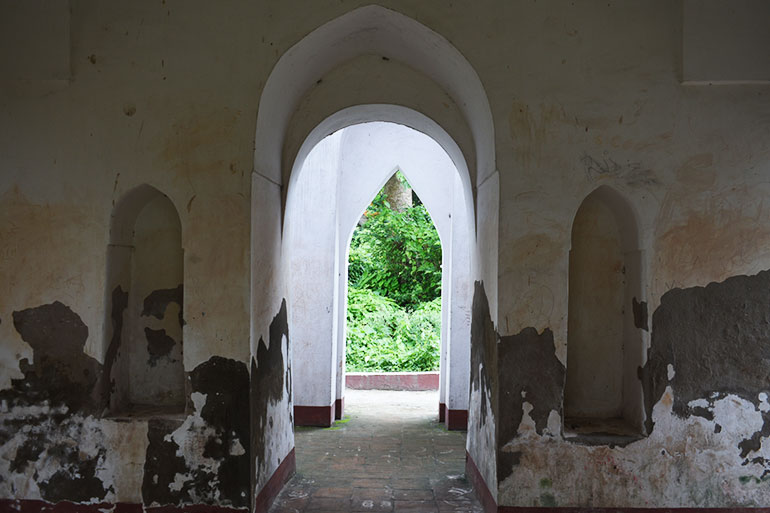
This rich history of Bengal is right on top of today's heritage list and a Heritage Photo Walk is an attempt to trace the colonial practices and how they have amalgamated with local culture and traditions of Serampore. The photo walk was organized on Sunday, June 26, 2022.
Serampore, a sub-divisional town in Hooghly district is only about 18 kilometres from Howrah. If you board the train from Howrah station, it is the eighth station in the Howrah-Burdwan main line of the Eastern Railway. The Grand Trunk Road passes through this town. Serampore is very well connected and other than the rail route, it is easily accessible both by road and waterways. This town has a rich history to offer. Today's bustling city is steeped in history. In 1757, the Danes named the city Fredrik Nagar after the then-King, Fredrik V of Denmark. Frederick Nagar was renamed Srirampur later.
Reginald Heber, who was consecrated the second Bishop of Calcutta on June 01, 1823, once commented that Frederick Nagar city is more European than Calcutta. It is believed the place got its name Srirampur from an ancient temple on present-day Dey Street, built by the King of Sheoraphuli and dedicated to the divine couple, Lord Ram and Sita. However, there are many disputes about this nomenclature.
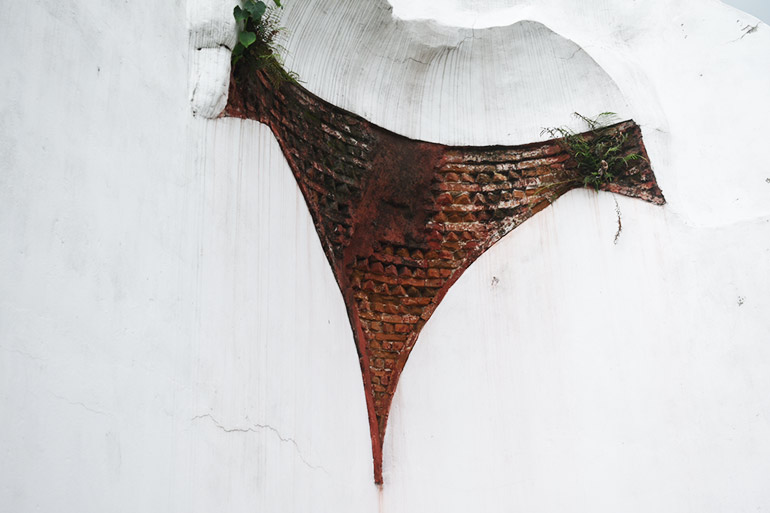
In the first part of the Heritage Photo Walk, we will discuss about an antique temple located at Ballavpur, an ancient locality of Serampore. The original ‘aatchala’ temple, built by Rudraram Pandit of Chatra in 1677 A.D., was formerly dedicated to Radhaballav. It is believed the place got its name, Ballavpur, from the name of the deity. Rudraram was a staunch devotee of Lord Krishna and it is believed the Lord appeared in his dream and instructed him to visit the palace of the ruler of Gauda and ask him for a specific touchstone to build his idol.
Following his vision, Rudraram went to Gauda and persuaded the ruler for the touchstone. His wish was granted by the king and Rudraram got the rock to his residence at Serampore. Three idols were carved from the stone -- Radhavallabh (set up at Serampore temple), the second was Shyamsundar and it was placed in a temple at Khardah and the third one was Nandadulal which was established at Saibna.
Later, when the river changed its course, all the idols, including Radhaballabh Jiu were moved elsewhere. A new temple was built a short distance away from the pagoda. This temple is still very popular in the vicinity and attracts thousands of devotees who gather here on Maghee Purnima (full moon day in the month of Magh that is, January) to offer prayers to the deities. People believe that seeing the three idols on the auspicious day frees them from the cycle of rebirth.
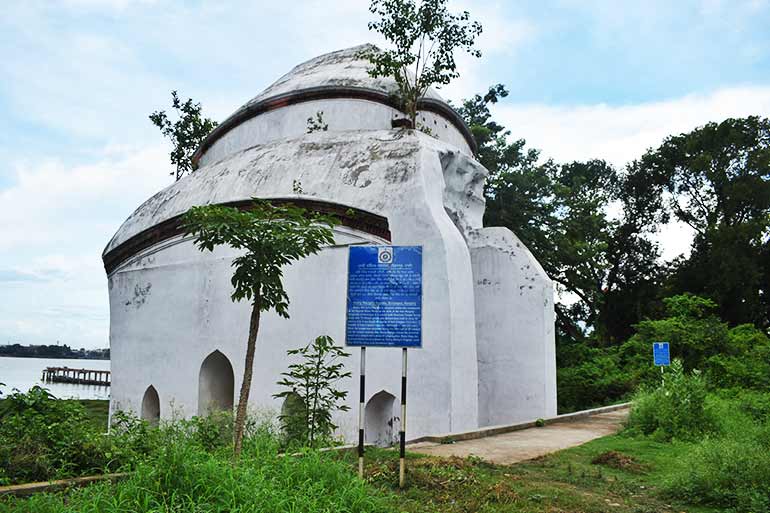
Around the middle of 18th century, the original temple collapsed and since then, locals have been calling it ‘Bhanga Mandir’ (a dilapidated temple). However, the shrine has been rebuilt and refurbished without changing the original structure and it has been renamed ‘Henry Martin Pagoda.’ Famous 18th century versifier, Hensman Anthony better known as kabiyaal (wandering poet singer) Anthony Firingee (a foreigner), sang, “Khrishta aar Krishte kichhu bhinno nai re bhai/ Shudhu namer phere manush phere eo kotha shuni nai re bhai…” (There is no difference between Christ and Krishna/ Only we humans discriminate them by naming the deities differently). The great unifying lyrics seem to reflect in naming the pagoda.
After the old aatchala temple was abandoned, it was purchased by Reverend David Brown in 1803. He requested Henry Martin, a missionary from England to stay there. Martin enjoyed his stay in the pristine area by the river, away from the din of settlements. He converted this shrine into a Christian chapel and it came to be known as Henry Martin’s Pagoda. After Martin left for England, the pagoda became a deserted spot once again with no visitors stepping there. It is said that this was the first church of Serampore. It is amazing to note how two religions amalgamate in this temple/pagoda.
Martin wrote about the pagoda: “My habitation assigned to me by Mr. Brown is a Pagoda in his grounds, on the edge of the river. Thither I retired at night and really felt something like superstitious dread, at being in a place once inhabited as it were by devils…”
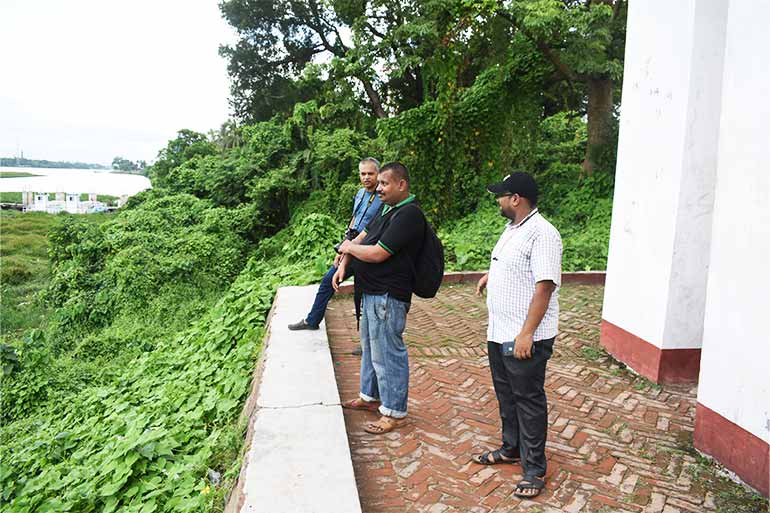
To this day, the pagoda remains a signature of the past tucked in a secluded location. Howrah Water Works Company bought that land in 1893 after settling a number of disputes with the owners. But no effort was made to renovate the structure of the shrine and it lay in a dilapidated state, left to be destroyed by the ravages of nature. Recently Serampore Municipality undertook an extensive renovation project. The three-and-a-half centuries’ old temple got a makeover and regained its lost glory to some extent. Ensconced amid verdant greenery, the pagoda’s silence is broken occasionally by the chirping of birds and the sound of waves lashing against the craggy banks. The cool breeze caresses the cheeks casually. It is truly a unique experience in itself.










